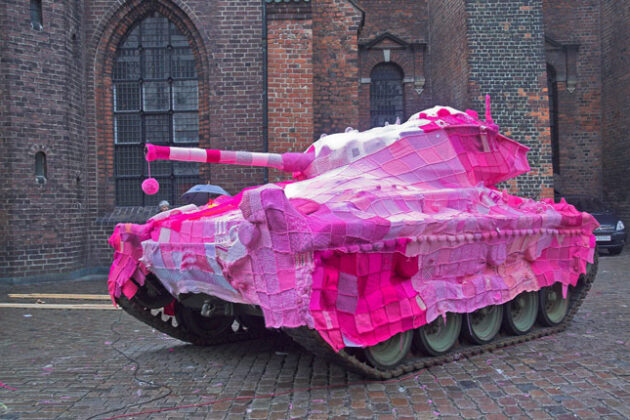
One of the things I like most about being an Advisory Board member and partner of Creative NJ is the opportunity to explore big ideas that can make a direct impact on our everyday lives, communities and society. One recent topic got me thinking (again) about the definitions we put on “art” when I found myself standing up for knitting.
It’s something I haven’t done since I was around 6 years old with my Aunt May from Brooklyn. I still have the remnants of what got to be a 4-foot-long scarf just because I loved the act of knitting – but not the end result enough to learn how to actually finish it… And that feeling is what I think makes human expression a valuable part of our lives that transcends arbitrary definitions of “art,” “craft,” or “hobby.”
I was recently in good conversation about the future of art as a vital part of our society – both for the meaningful ideas that are explored, but also because it is a true economic industry for tens of thousands of creative workers who have refined their passion into a job. As often happens when this topic comes up, a distinction was made between experts and amateurs – with knitting as a reference point. Now, the drawing of lines in art is one of my pet issues, so I quickly sent out an e-mail entitled “Knitting As Art” with these incredible examples of skills and meaning that demonstrate the possibilities of art within the medium.
My fellow debaters acknowledged the art in the “sculptures” referenced, but questioned my assumptions about all knitting being an artistic or creative process. It’s a fair question. Did my Aunt May consider herself an artist when she knitted an afghan or scarf? Did she even realize that her selection of yarn material was more than a practical decision? Many folks in our industry seek ways to name or make conscious the process that goes into practical or accepted practices as part of a bona fide creative process. Toward that end, they are seeking to benefit the creative movement and the arts industry at the same time.
I understand this benevolent approach to making definitions, but I’m not sure it grows creativity in ways that can break barriers and help people achieve great heights in their everyday lives.
The key element in this equation is in the mind of the creator. In my opinion, honoring and celebrating that is more productive – and is a bigger challenge – than definitions and systemizations.
Humans express and understand their expressions on a huge spectrum. The way people find or express “I Am” is so varied and happens at such different places on that spectrum that we shouldn’t try to pin it down. Rather, I’d like to see it opened up.
The defining moment is the point of individual consciousness. When a person takes responsibility, acts and expresses a thoughtful and/or emotional connection with their work – and identifies it as such – they are deciding what’s important. My Aunt May may not have thought of herself as an artist when she made a scarf, but I know plenty of people who do – or would say their craft is a mindful human expression. Some (maybe your own “Aunt May”), might take pride in making something by hand or might be happy in providing for another person. Or some might just say it makes them feel “good.” In today’s world, these are all hugely transcendent ideas worth celebrating.
I would prefer to see movements and industries act as open stewards and advocates for human endeavors instead of defining process. But that’s my personal preference. I tend to like the “rising tide floats all boats” idea because it leaves room for unlimited perspectives. What could happen if we moved away from scarcity-thinking to abundance-thinking in our society? Making divisions tends to separate people more than join them. Sure, people within a movement or industry might feel better about defining their process and levels of expertise. But, our bigger challenge is to cross sectors to help people value a lot of different fields and perspectives – and not be threatened by them.
It’s not easy to foster this kind of openness in our culture of competition. We have a foundation of democracy, though, to build from. It’s what we we’re all about in this country (OK, maybe only half of us say that…). And people in the arts are uniquely suited to help forge the way for such an open mindset. It’s idealistic, definitely – and absolutely worth pursuing.
I say we celebrate my Aunt May (and all the hipster knitters now in her Brooklyn legacy) for knitting together human expression, artifact and love and not worry so much about limiting where her work might be on the spectrum. There’s room for everyone under the afghan.

About Social Impact Studios
Since 1996, the people at Social Impact Studios have combined artistry & activism to promote important social issues. We believe good causes should get more attention than anything else. And we believe thoughtful, beautiful and meaningful communication is still the best way to engage and motivate people. Social Impact Studios is a creative hub where groups and creative activists collaborate, learn and do the work. From concept to creation, we design action plans, visuals, messages and moving grassroots experiences that make a social impact – together.
